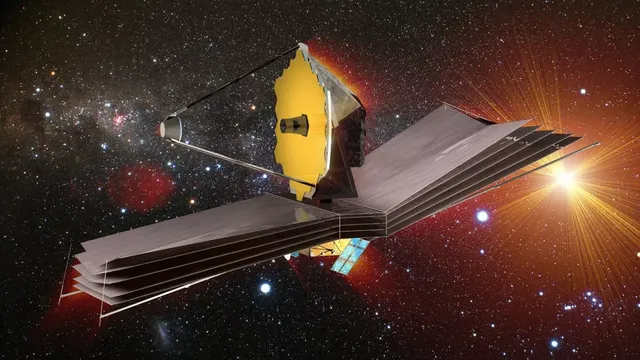James Webb Space Telescope vs. Hubble: How will their images compare?

"It will take amazing images, they will be better than what Hubble did," said Webb project scientist Klaus Pontoppidan.
NASA's James Webb Space Telescope is currently poised to launch and become the most powerful telescope in space. But how will its photos compare to Hubble's?
The Hubble Space Telescope launched into low Earth orbit in April 1990. Over the three decades since, the famous observatory has expanded our view of the cosmos and held our attention with the stunning images it collects. What once was a faint and mysterious abyss became a detailed and colorful universe, and we could see stars and galaxies as they'd never been seen before.
But the James Webb Space Telescope, which is scheduled to launch on Dec. 24, will do things a bit differently. With its giant gold mirror and infrared light observation tools, Webb is designed to "see" objects 10 to 100 times fainter than what Hubble can see, according to a NASA fact sheet. So, how will Webb's view compare to Hubble's?
ONot a replacement telescope
Webb is often described as Hubble's replacement or successor. But despite a handful of glitches over the years, Hubble's science instruments are still going strong, and the two big scopes are set to observe together (albeit far apart from one another) in space.
Hubble is pretty close to us in low Earth orbit, but Webb will travel out much farther, to a gravitationally stable spot 930,000 miles (1.5 million kilometers) from Earth known as the Sun-Earth Lagrange point 2 (L2).
Additionally, while both Hubble and Webb are large space telescopes (though Webb is considerably bigger), the two actually "see" the universe very differently.
"It will take amazing images; they will be better than what Hubble did," Klaus Pontoppidan, Webb project scientist at the Space Telescope Science Institute in Baltimore, said during a news conference in May. But, while better in ways, Webb's images will also be fundamentally "different, because it's differentne thing's for sure: The images Webb will capture "will be detailed and spectacular," according to the sheet. Not a replacement telescope
Webb is often described as Hubble's replacement or successor. But despite a handful of glitches over the years, Hubble's science instruments are still going strong, and the two big scopes are set to observe together (albeit far apart from one another) in space.
Hubble is pretty close to us in low Earth orbit, but Webb will travel out much farther, to a gravitationally stable spot 930,000 miles (1.5 million kilometers) from Earth known as the Sun-Earth Lagrange point 2 (L2).
Additionally, while both Hubble and Webb are large space telescopes (though Webb is considerably bigger), the two actually "see" the universe very differently.
"It will take amazing images; they will be better than what Hubble did," Klaus Pontoppidan, Webb project scientist at the Space Telescope Science Institute in Baltimore, said during a news conference in May. But, while better in ways, Webb's images will also be fundamentally "different, because it's different Not a replacement telescope
Webb is often described as Hubble's replacement or successor. But despite a handful of glitches over the years, Hubble's science instruments are still going strong, and the two big scopes are set to observe together (albeit far apart from one another) in space.
Hubble is pretty close to us in low Earth orbit, but Webb will travel out much farther, to a gravitationally stable spot 930,000 miles (1.5 million kilometers) from Earth known as the Sun-Earth Lagrange point 2 (L2).
Additionally, while both Hubble and Webb are large space telescopes (though Webb is considerably bigger), the two actually "see" the universe very differently. Pontoppidan said.
While Hubble observes light at primarily optical and ultraviolet wavelengths, Webb is designed to detect primarily infrared light.
"I think maybe there was some concern that, you know, you don't want images that end up looking wispy," Pontoppidan said. "But as it turns out, actually, if you just go a little bit further out into infrared … the dust itself lights up in thermal light. You get a nebula that shines."